Relationship between persistent postoperative pain and postoperative complications
: a multicenter prospective cohort study
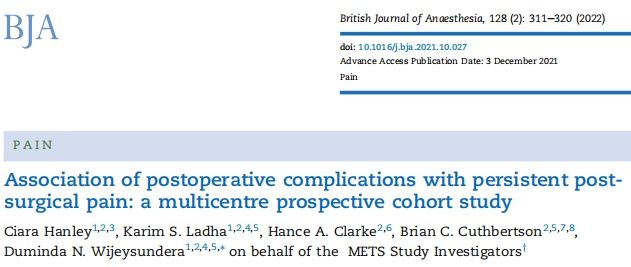 < /p>
< /p>
Guizhou Medical University Anesthesia and Cardiac Electrophysiology Research Group
Translation: Hu Tingju Editor: Ma Yanyan Review: Cao Ying
Abstract
Background : Persistent postoperative pain is a thorny problem, difficult to manage, and under-recognized. The study found that postoperative complications may be risk factors for persistent postoperative pain. We performed a secondary analysis of a cohort study on preoperative exercise tolerance measurement (METS) to describe the association of persistent pain and major complications at 30 postoperative days and 1 year postoperatively.
Methods: This analysis included 1313 inpatients (age ≥40 years) undergoing noncardiac surgery who survived more than 1 year after surgery. The co-primary outcomes were pain at 30 days after surgery and pain at 1 year after surgery. Postoperative pain was defined as pain or moderate to severe discomfort and no improvement in pain or discomfort compared to preoperative pain. The main exposure was a major in-hospital complication (rated as moderate to severe by modified Clavien-Dindo criteria). A multivariate regression model was used to describe the adjusted relationship between important complications and prognosis.
Summary
Results: Of the patients in the cohort study, major complications occurred in 12% (n=163) and 30 days after surgery in 51% (n=674). Pain, 42% (n=545) experienced pain at 1 year postoperatively. Major complications were associated with pain at 30 days after surgery (adjusted odds ratio, 1.54, 95% CI, 1.05-2.23) and pain at 1 year after surgery (adjusted odds ratio, 1.42, 95% CI, 0.98-2.06) . When repeated analyses were performed with multiple imputation for missing covariates and outcome data, postoperative complications were associated with postoperative pain at 30 days and 1 year.
Conclusion: Patients with major postoperative complications were more likely to have pain 30 days after surgery or 1 year after surgery. However, more studies are needed to confirm these findings and describe the underlying mechanisms.
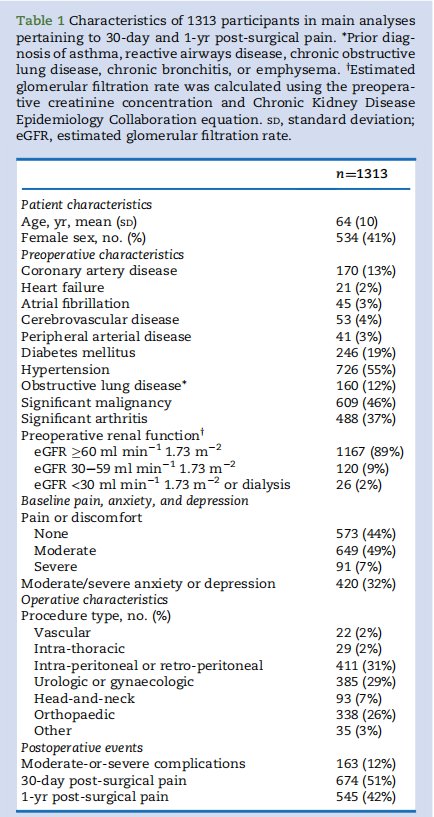
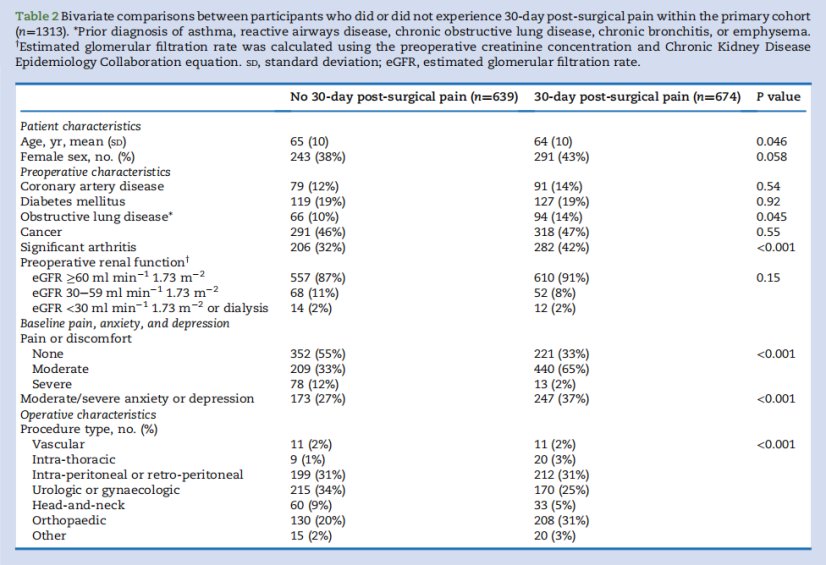
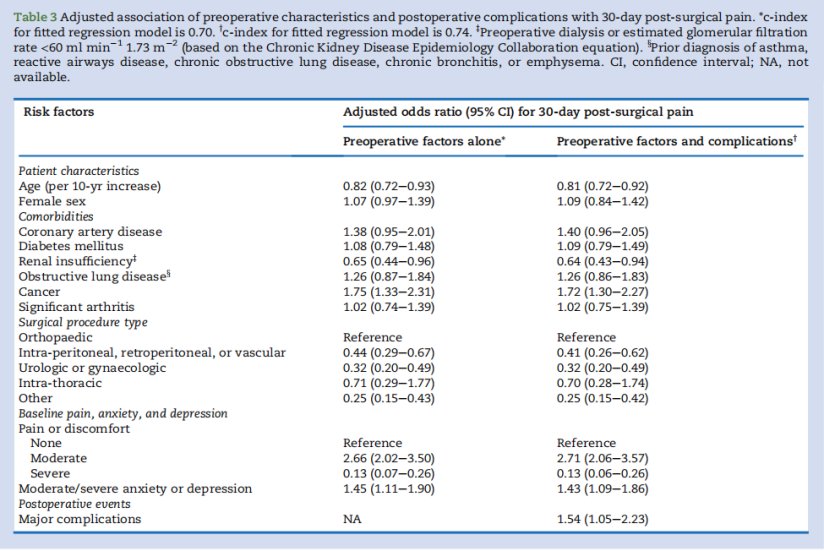

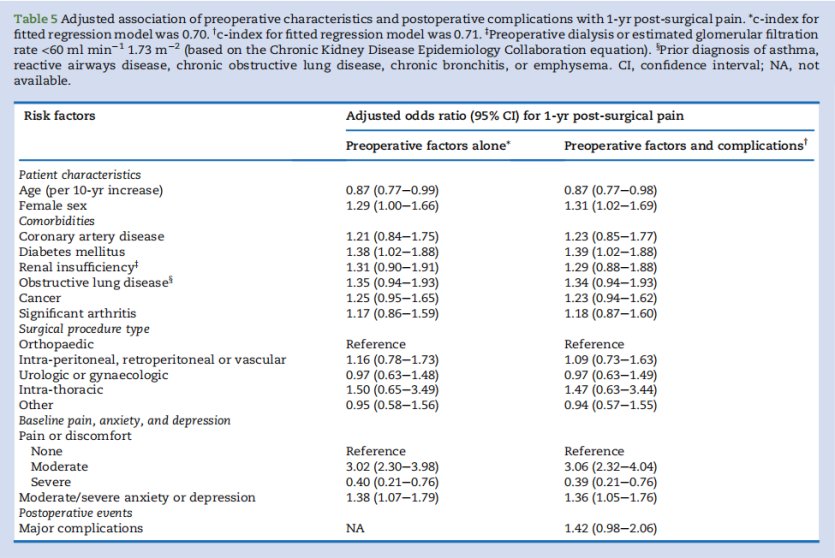
< p> Original source: Ciara Hanley, Karim S. Ladha, Hance A. Clarke, et al. Association of postoperative complications with persistent post-surgical pain: a multicentre prospective cohort study. [J] Br J Anaesth. 2022 Feb;128(2):311-320.doi: 10.1016/j.bja.2021.10.027 . Epub 2021 Dec 3.
Original in English
Association of postoperative complications with persistent Post-surgical pain: a multicentre prospective cohort study
Background: Persistent post- surgical pain is an important and under-recognised problem that is dificult to treat. Postoperative complications have been identified as possible risk factors for persistent post-surgical pain. We conducted a secondary analysis of the Measurement of Exercise Tolerance before Surgery (METS) cohort study to characterise the association of major postoperative with post-surgical pain at 30 days and 1 yr after major surgery.
Method:The analysis included 1313 participants ( 40 yr old) who had inpatient noncardiac surgery and survived for 1 yr. The co-primary outcomes were 30-day post-surgical pain and 1-yr post-surgical pain. Post-surgical pain was defined as pain or discomfort that was of moderate or severe intensity (EuroQoL-5D [EQ-5D] instrument) and unimproved compared with preoperative pain or discomfort. The principal exposure was major in-hospital complications (moderate or severe by modified Clavien-Dindo criteria). Multivariable logistic regression modelling was used to characterise the adjusted association of major complications with outcomes.
Results:Of the cohort, 12% (n=163) experienced major complications, 51% (n=674) reported 30-day post-surgical pain, and 42% (n=545) reported 1-yr post-surgical pain. Major complications were associated with 30-day post-surgical pain (adjusted odds ratio [aOR]=1.54; 95% confidence interval [CI], 1.05-2.23) and possibly 1-yr post-surgical pain (aOR=1.42; 95% CI, 0.98-2.06). When analyses were repeated after multiple imputation of missing covariate and outcome data, complications were associated with both 30-day and 1-yr post-surgical pain.
Conclusion:Patients who developed major complications were more likely to report pain at 30 days and possibly 1 yr after surgery. Research is necessary to validate these findings and delineate underlying mechanisms.
THE END